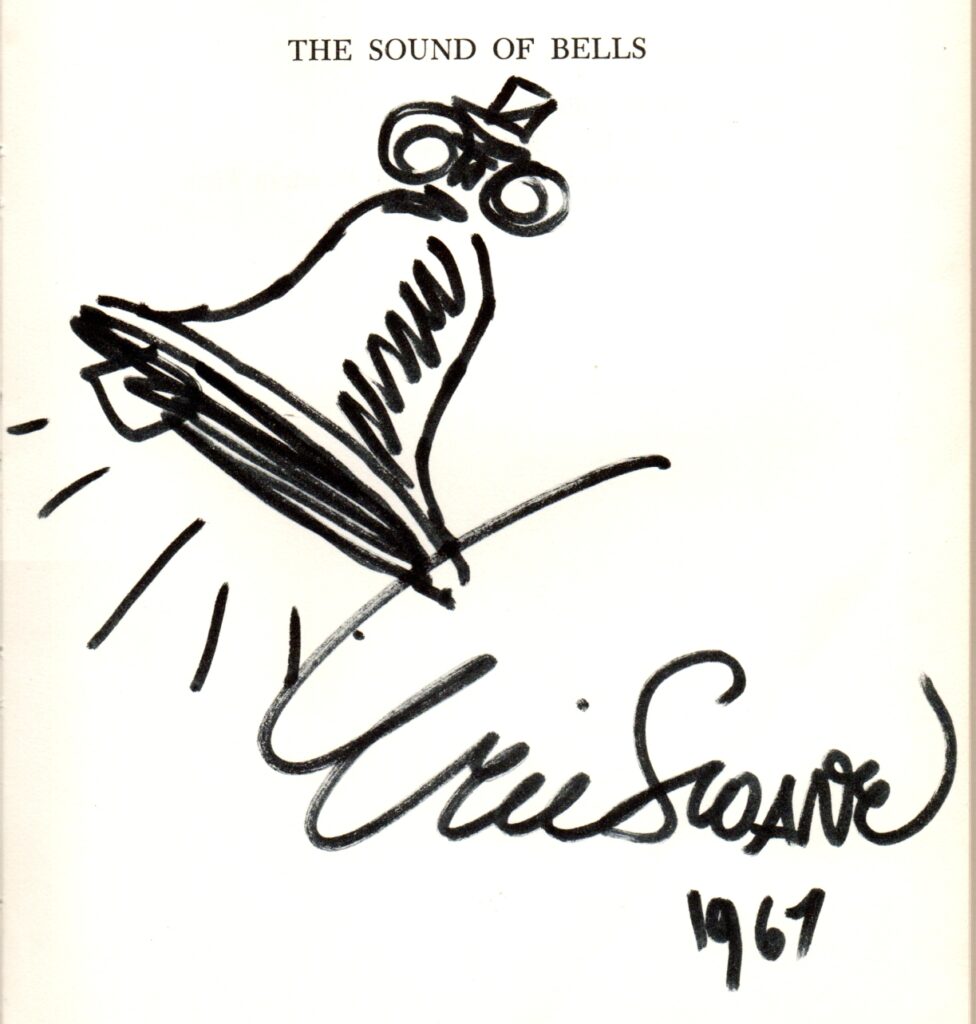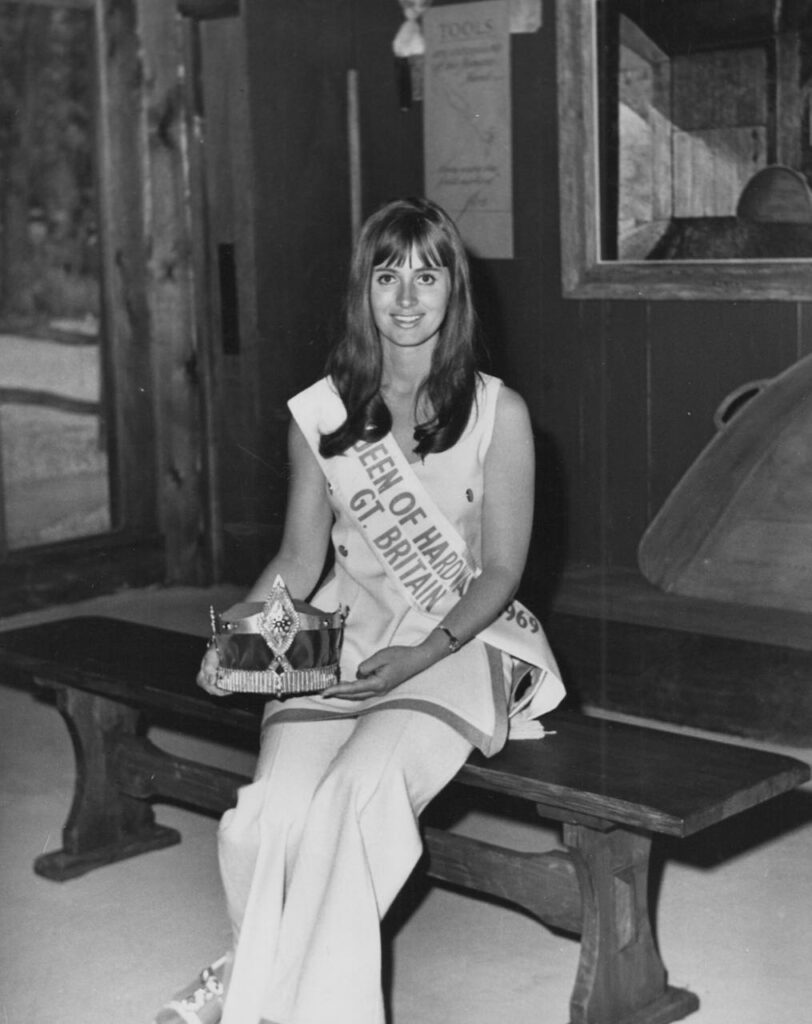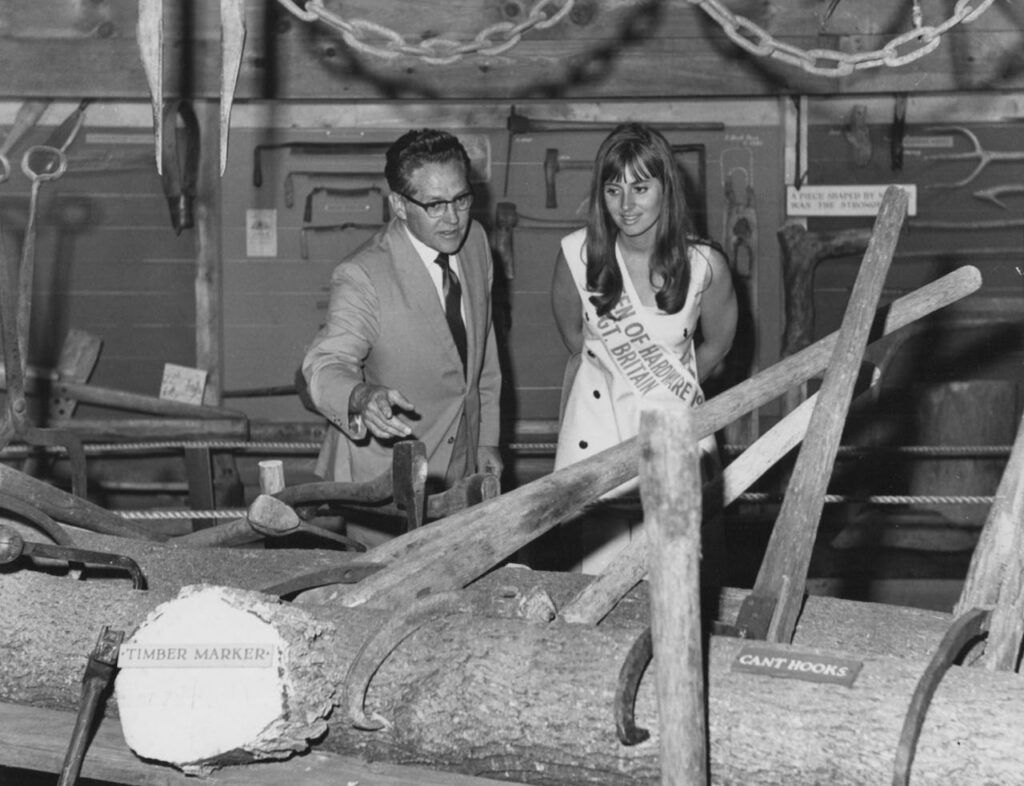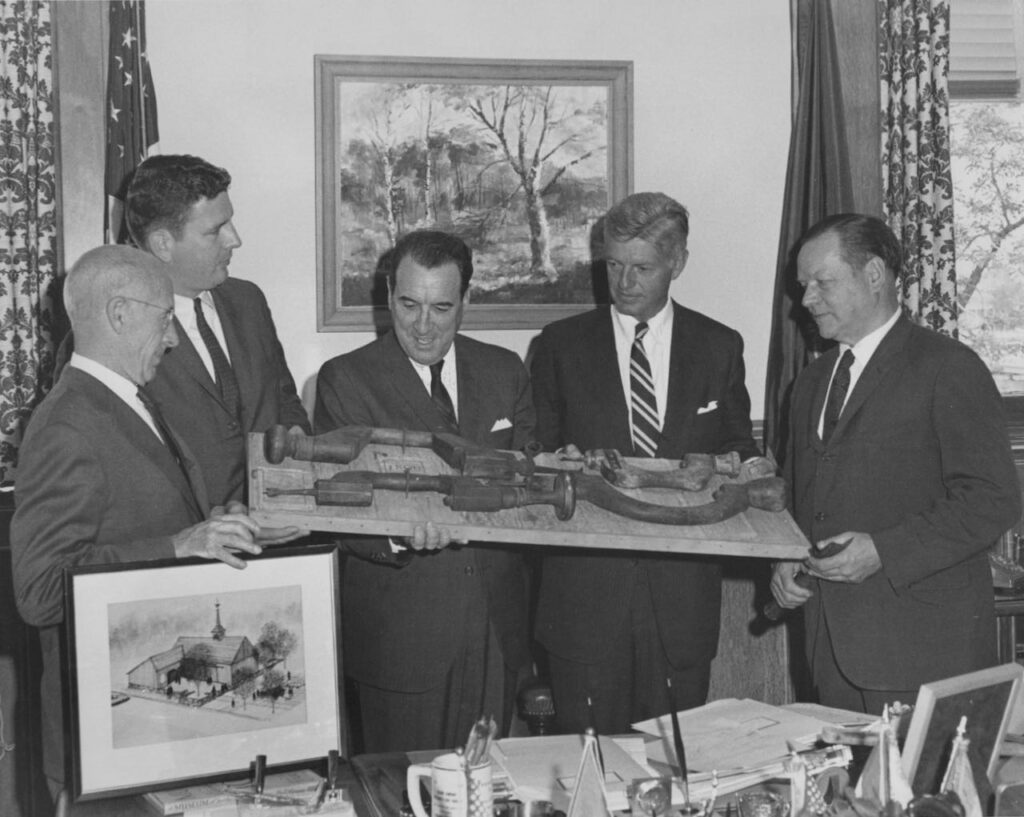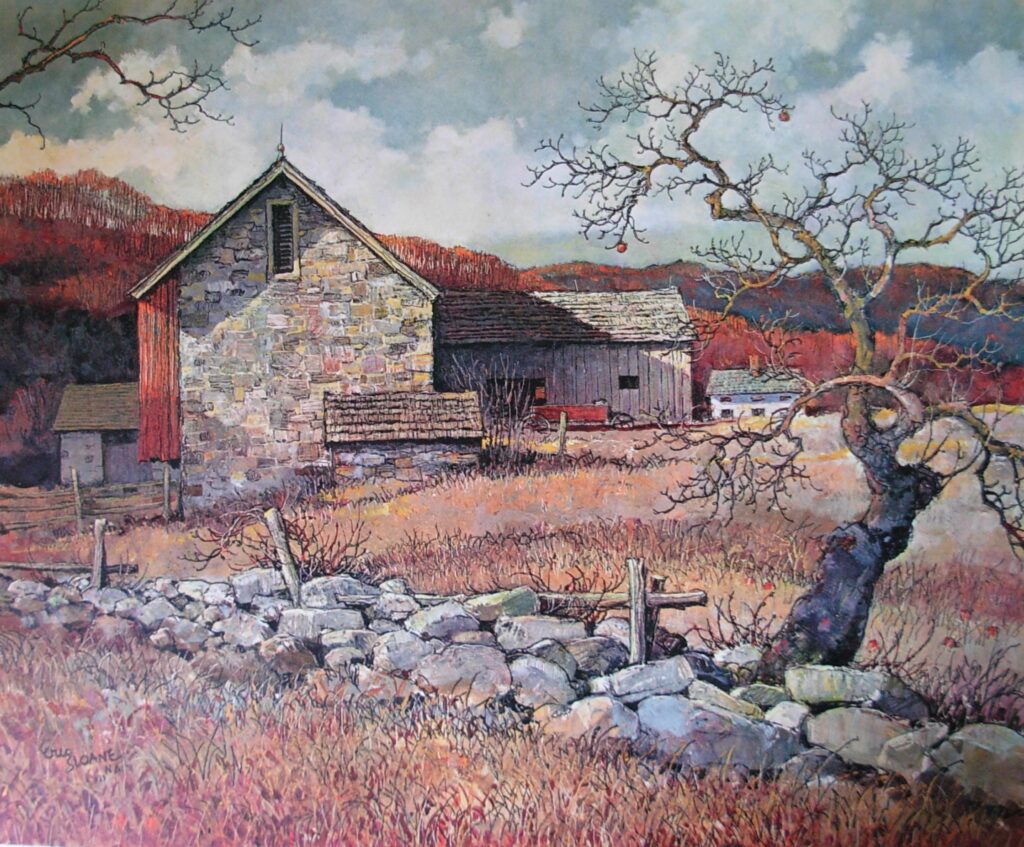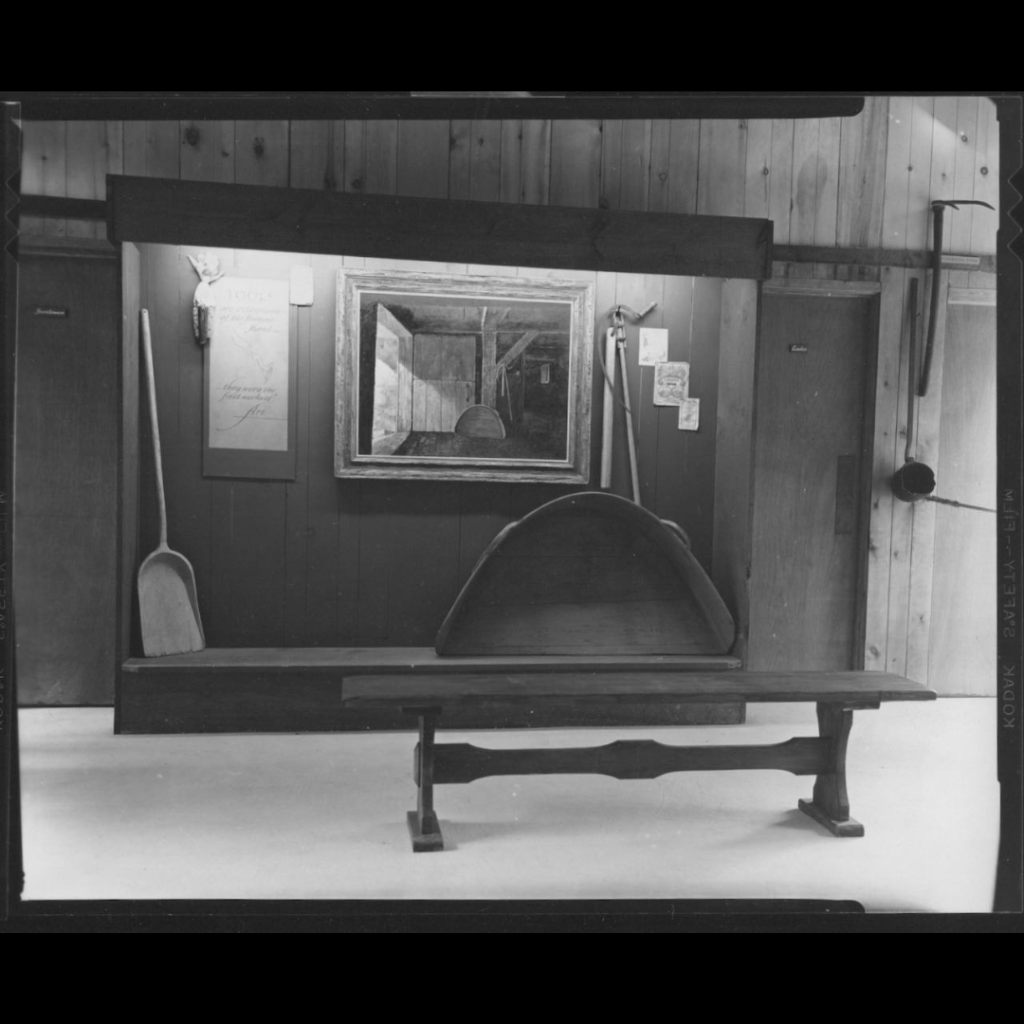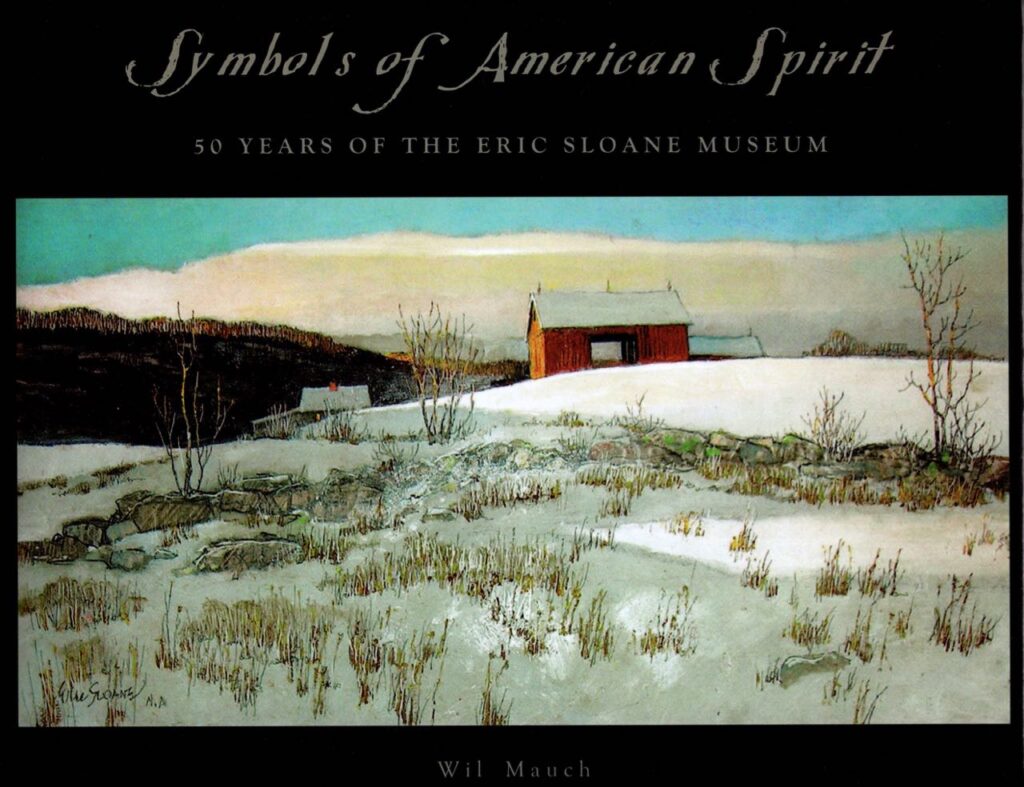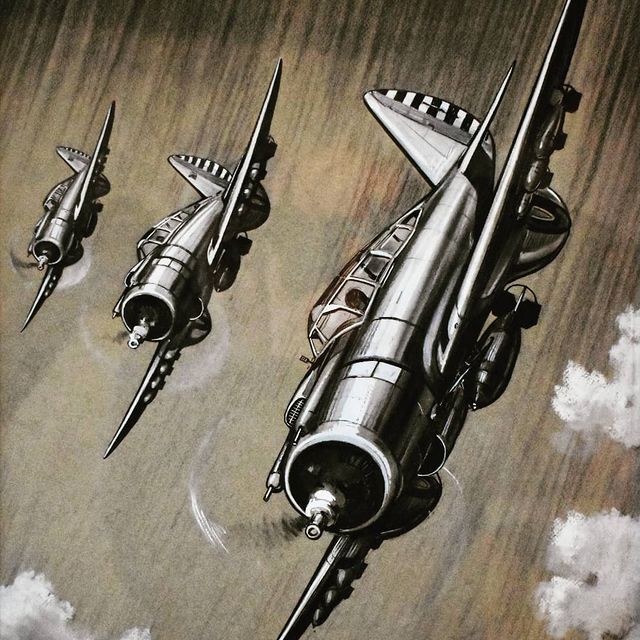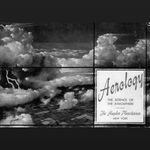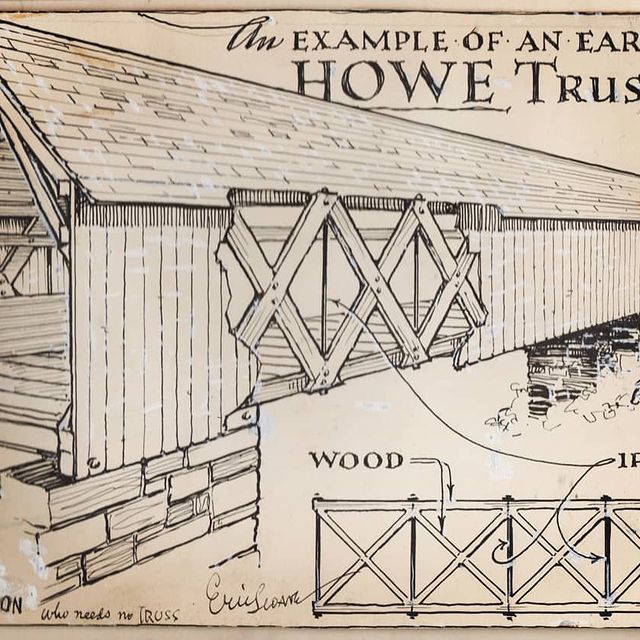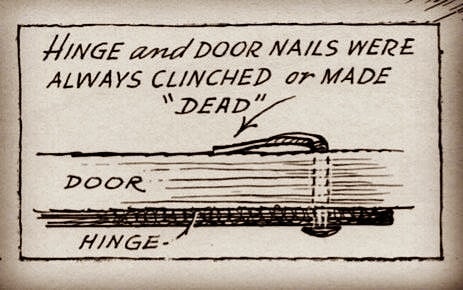Happy 4th of July from the Friends of the Eric Sloane Museum! Eric Sloane had published “The Sound of Bells” in 1966.
It was an outgrowth of his research and efforts to promote the ringing of bells – along with his friend and fellow author Eric Hatch – on the 4th of July:
“…the Let Freedom Ring project envisioned by the two men, who met as ‘The Committee of the Two Erics’ to promote an idea born from a radio interview Eric Sloane gave in July of 1962. During that interview, Sloane spoke of the early American tradition of ringing bells in celebration of the nation’s independence instead of the more modern fireworks displays. Listeners responded enthusiastically to the idea, and “The Committee of the Two Erics” began an article and letter writing campaign that ultimately led to a joint congressional proclamation (77 Stat. 9441), adopted 26 June 1963 to have bells rung in public buildings across America in commemoration of the nation’s independence.”
– From Wil Mauch’s Symbols of American Spirit: 50 Years of the Eric Sloane Museum
